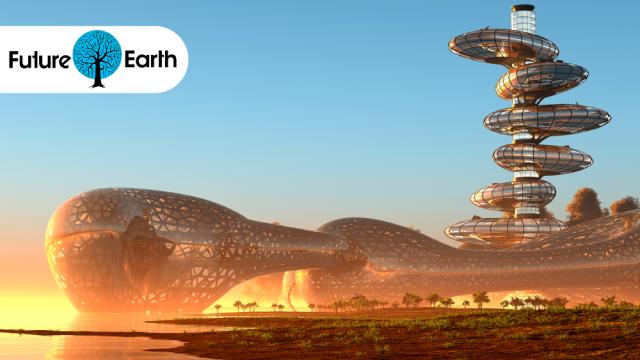Let’s face it, if we’re going to save the planet from ourselves, we’re going to have to develop cleaner technologies. Here’s what the future has in store once we make the transition to a high-tech, low-carbon world.
Our world is steadily transitioning to a low-carbon economy. And it’s not just because of climate change. Other contributors include rising energy costs, global population growth, rapidly escalating security concerns, and expanding global economic activity.
Looking to the future, it’s difficult to know with exact certainty what a low-carbon, or “green economy”, will look like once we achieve it, but we can be certain that it will involve a massive shift of our current, unsustainable carbon-heavy economy. We may never completely eliminate carbon emissions, but we can certainly strive to achieve carbon neutrality. Because our consumption habits are unlikely to change, this will require considerable technological investment and ingenuity.
Futurist Ramez Naam, author of The Infinite Resource: The Power of Ideas on a Finite Planet, explained it to Gizmodo this way: “Across energy, food, transportation, housing, and all of that: Very little of our progress is going to be through getting people to voluntarily consume less. People resist that tremendously. What we have to do, if we want to succeed, is provide more of the clean, non-polluting, climate-safe options in all of these.”
A Modern Example
Thankfully, achieving a low carbon-tech world is not beyond our capacities. As science fiction writer and futurist Madeline Ashby told Gizmodo, we already have a real-world example: Iceland.
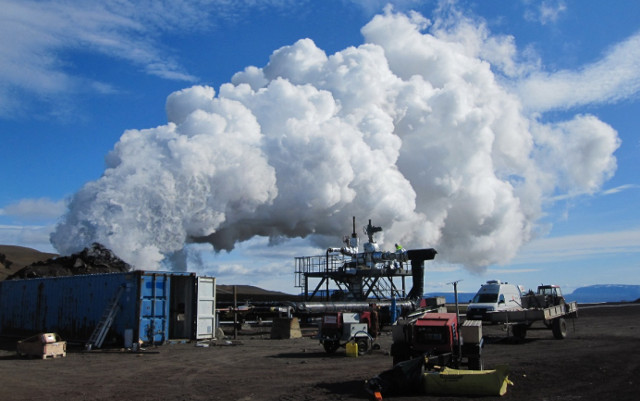
Iceland’s IDDP-1, the world’s first magma-enhanced geothermal system. (Credit: IDDP)
Indeed, this tiny, northern nation already generates 85 per cent of its own energy in a sustainable, albeit not completely carbon-neutral way. Remarkably, over 65 per cent of Iceland’s energy comes from geothermal sources, most of which is directed toward heating and electricity.
Ashby says that most of Iceland’s other energy production comes from hydroelectric power, which is the same type that US states like Washington generate, use, and export. Hydroelectric accounts for 72 per cent of Iceland’s total electricity production, so it’s able to sell some off — meaning they have found a way to turn green energy into a viable and profitable industry.
Iceland really has only about four industries: fishing, shepherding, energy, and tourism. Ashby points out that, with a population of 333,000 and a limited space for development, “they have had to become the best at all of those things.”
In the retail context, this means that things actually cost what they cost. “Iceland is expensive,” said Ashby. “Those darling handmade lambswool sweaters? $250.00. Bowl of fish stew? $40.00. Pint of local beer? $14.00. Shot of local gin? $7.00. And the petrol? The petrol costs what petrol should cost — in a world addicted to oil, Icelanders charge cocaine prices for gasoline.”
Ashby said that the only cheap Chinese imports — the kind that cost an absurd amount of carbon in shipping and coal — are “cheesy tourist trinkets”, and even those are few and far between. “Things are made locally, by white folks living in relative privilege — and not, say, sweatshop workers in Bangladesh — so the price reflects a living wage,” Ashby said. “And people pay it. Because in a sustainable economy, you pay people what they’re worth, and enough to raise their families.”
Self-Allocating Resources
Another trending real-world example is what science fiction writer and futurist Karl Schroeder calls self-allocating resources, a development that will be made stronger by the convergence of the Internet of Things and blockchain technologies such as Ethereum.
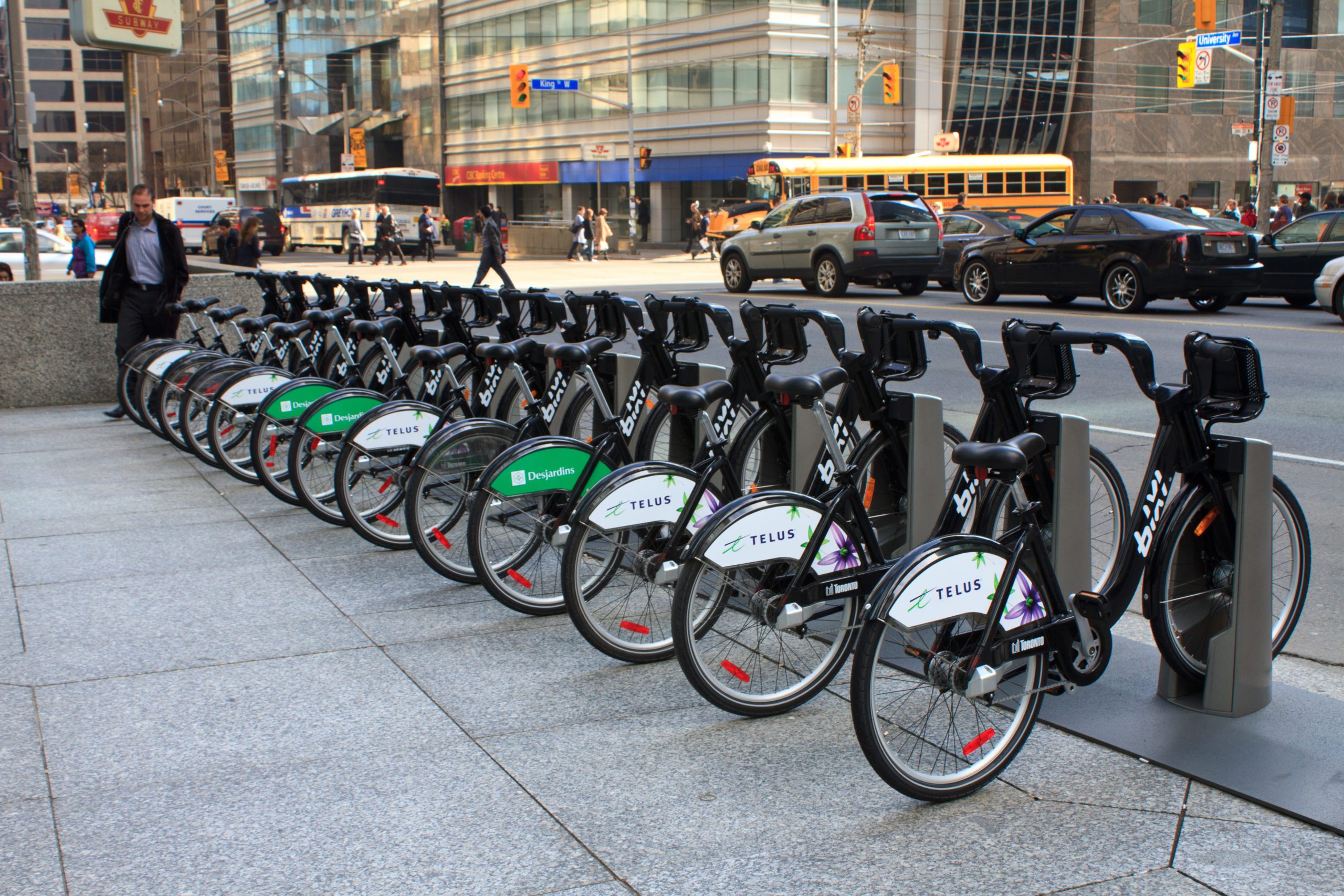
Bixi Bike Share in Toronto: More of this means less carbon in the atmosphere (Credit: Gary J. Wood/ CC BY-SA 2.0)
Schroeder points to Uber as an example. Though we like to think of Uber as a company, he says it’s more like a middleman between people and an under-used resource: cars. “There’s no reason why connected cars and potential riders can’t negotiate arrangements themselves, without the middleman — and this goes for all our other resources,” he told Gizmodo.
Another example is the lowly household drill — a tool that, on average, will only be used for a few minutes during its entire lifespan. Schroeder believes that “tools co-ops” are one potential answer to this severe resource under-use, but even that’s not likely to last.
“Consider a connected drill,” said Schroeder. “If it’s lying around, under-used, it can advertise its services to trusted neighbourhood peers — with its owner’s permission — and with drone delivery get itself into the hands of whoever needs it within minutes. The result? We need fewer drills to get the same amount of stuff done.”
The power of this approach doesn’t become evident until we start listing all the redundancies in our environment. At the same time, he’s not suggesting that we adopt a super-communitarian approach, or give up ownership of our things. As he put it, “Sharing is not relinquishing.”
Looking to the future, he thinks we won’t need to own as many things, “but we’d get the same effect as if we did; and our sharing arrangements would be private, peer-to-peer, and fully voluntary — and far less carbon-intensive.”
The Quest for Low-Carbon Energy
Sharing resources and living in a sustainable manner is all fine and well, but if a low-carbon tech world is going to be achieved, we’re going to have to find a better way of getting energy.
“Electricity, today, is overwhelmingly created by fossil fuels,” said Ramez Naam “That’s going to change, if we have any hope of beating climate change.”

The 600-MW Fântânele-Cogealac Wind Farm in Romania (Credit: Sandri Alexandra/CC BY-SA 2.0)
According to Naam, we have four viable core technologies moving forward: solar, wind, energy storage, and nuclear. “Solar just passed the point where it provides 1% of the world’s electricity,” he said. “Storage is about 20 years behind solar. But they have the advantage that they’re plunging in price rapidly, and are taking off in deployment.
Wind already costs less than natural gas across most countries (when the wind blows) and is still dropping in price. Solar is more expensive, but is plunging in price even faster, and will eventually cost one half to one third of what fossil fuel electricity does. The key to getting both of them across the finish line is energy storage. With cheap storage, we can store energy from the sun and wind for when it’s dark or the wind isn’t blowing. And the price of energy storage is dropping fast too.
As for nuclear, Naam says it provides safe, 24/7, carbon-free electricity, but it’s in trouble. “Partially that’s because fear has led to closing some reactors, and because our policies don’t push nuclear as a non-carbon alternative,” he said. “But it’s also because the nuclear industry is seeing prices rise instead of fall. They haven’t found the way to innovate in reducing prices. So we hope that they will get their act together, perhaps through future small-modular reactors that can be built on assembly lines. But right now the future doesn’t look so bright for nuclear.”
The other question when it comes to energy is how it will manifest in the larger economy, and how individual businesses and homeowners will adapt to the changing technological landscape.
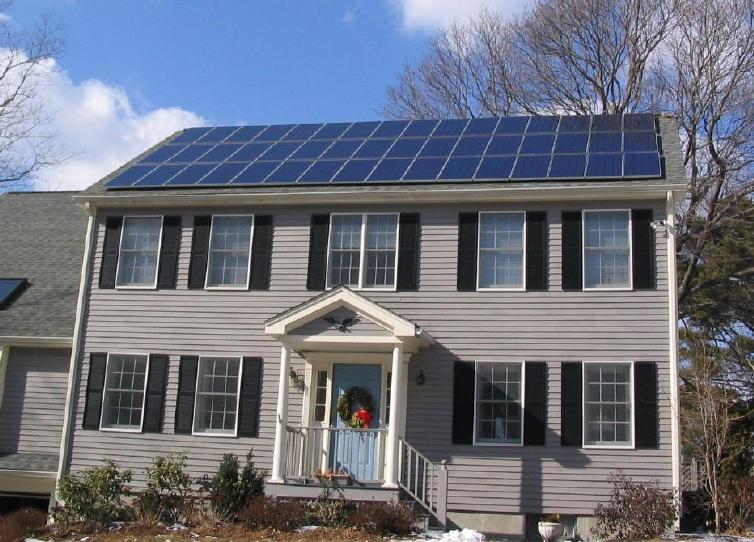
Energy independent, low carbon. (credit: Grey Watson/CC BY-SA 3.0)
According to Patrick Hanna, a consultant with Enshift Power and IGES Canada Ltd., the near term focus will be on efficiencies, as it is by far the most cost effective strategy to implement. “That way, as we transition to micro- or community-based approaches to the generation and storage of energy, we will have taken the necessary steps to control wasted resources,” he explained to Gizmodo.
As to whether we go the route of massive, centralised facilities, or move to an off-grid energy model, that remains an open question. “The intriguing part for me about the future of renewables is whether we maintain our large scale projects and rely on current grid infrastructure, or we take the microgrid approach,” said Hanna. “On the latter point, this can mean either community solar, i.e. communities that generate and store their own power and do not distribute to the grid, or complete self generation and storage.”
Hanna said this will be decided as industry, governments, and consumers duke it out for energy supremacy. Indeed, there’s a lot of money to be made — and lost — in whatever direction is taken. What’s more, it’s also possible that solar companies will become their own utilities, or they may go so far as to partner themselves with local communities. But as Hanna admits, there will be plenty of resistance from energy providers.
The Future is (Literally) Bright
Naam and Hanna both stress that solar will play a huge role as we transition to a low-carbon economy. It’s a trend that’s well underway, as witnessed by several gigantic efforts around the world. These installations strongly hint at what the future of energy will look like.
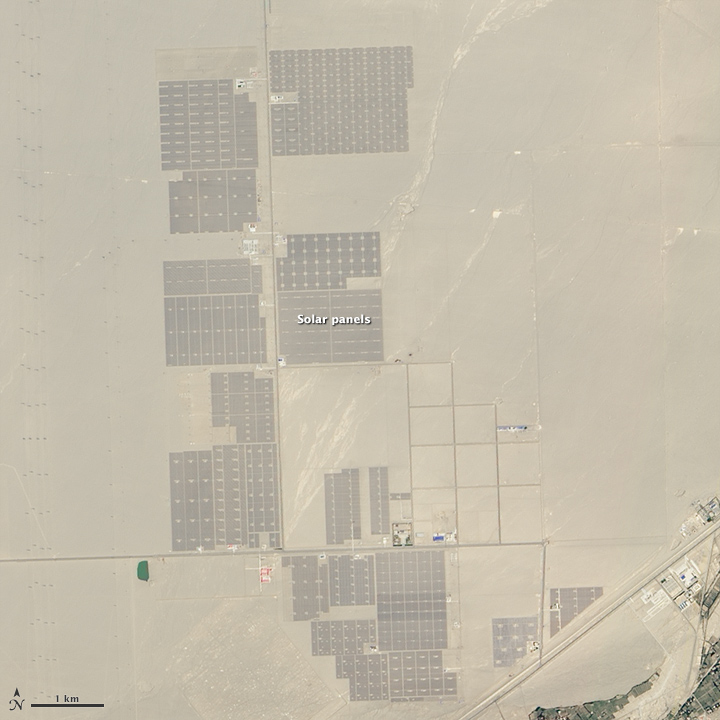
Solar farms located on the outskirts of Dunhuang in northwestern China’s Gansu Province (Credit: NASA Earth Observatory image by Jesse Allen, using EO-1 ALI data provided courtesy of the NASA EO-1 team).
Take China’s first large-scale power station, which is currently under construction in the Gobi Desert. The solar farm, which stretches for kilometres and can be seen from space, is currently three times larger than it was just three years ago. NASA explains what that means in terms of added power:
According to China Daily, Gansu Province’s total installed solar capacity in 2014 reached 5.2 gigawatts. Clean Technica reported that China’s National Energy Administration (NEA) had set the goal of increasing the province’s capacity by an additional 0.5 gigawatts in 2015.
Across the entire country, total installed capacity in 2014 was 28.05 gigawatts, according to PV Magazine. Of that, more than 10 gigawatts were newly added capacity in 2014, which led to a 200 per cent increase in the kilowatt-hours of electricity produced via solar over the year before.
China has added more than 5 gigawatts of new capacity in the first quarter of 2015 alone. It’s part of the country’s larger plan to transition away from coal, and move towards more renewable, sustainable energy.
Similar things are happening in the United States, including the 9 million panel, 24.6 square kilometres, 500-plus megawatt Topaz Plant, and the massive 579-megawatt Solar Star project. Plants like these will be leveraged in the future to double as desalination plants to produce copious amounts of drinkable water.
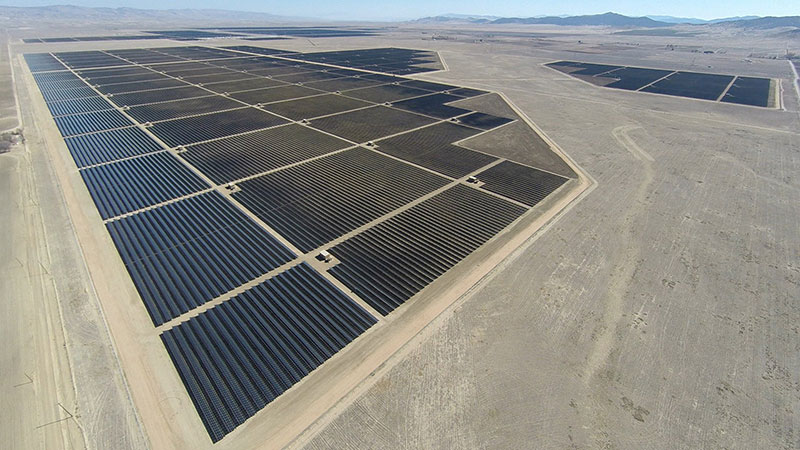
The Topaz Plant (Credit: Center for Land Use Interpretation)
Looking ahead to the mid 21st century, it’s also possible that we’ll extract solar power directly in space. The prospect of space-based solar has been around since the 1960s; some experts believe it has the potential to solve all our energy needs.
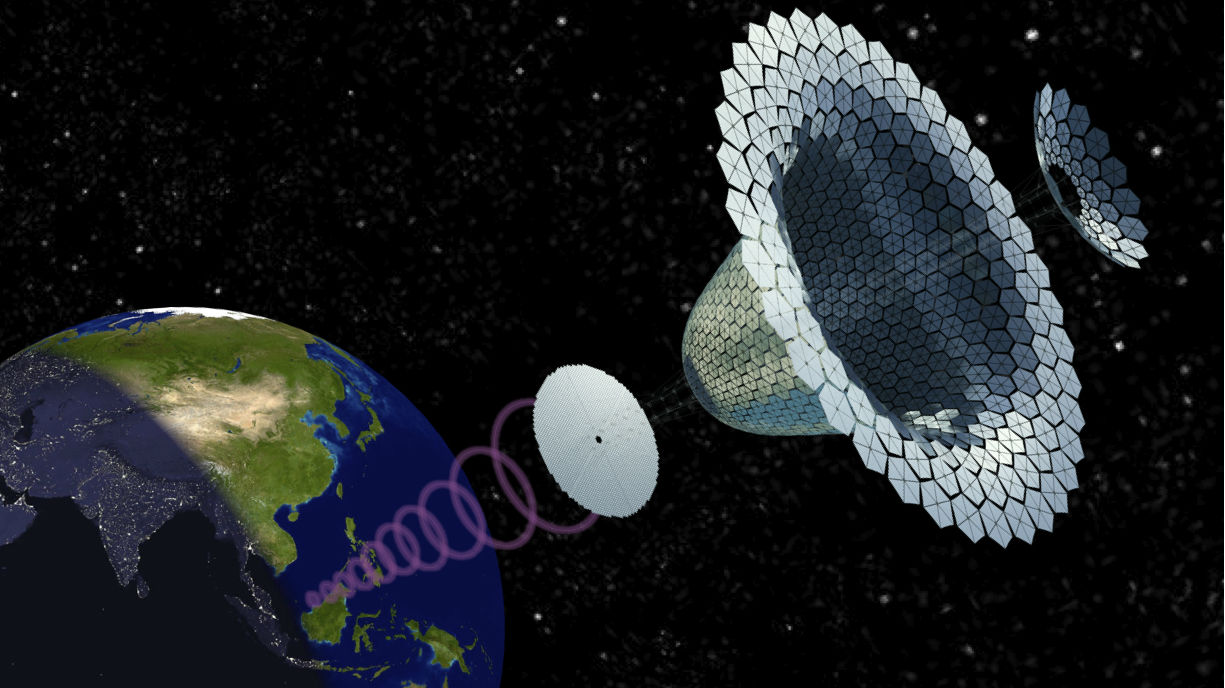
Space-based solar concept image (Credit: John C. Mankins/NASA)
Japan, with its proposed SBSP System, is leading the way. Its space agency, JAXA, is hoping to get a fully operational system up by 2030. Once in place, the system would operate in a stationary orbit about 36,049km above the equator where it will absorb sunlight. It would then transmit energy to Earth using laser beams at about 42 per cent solar-to-laser energy efficiency. Each energy-extracting satellite will beam the energy to a 2km wide receiving station capable of producing an entire gigawatt of electricity — enough to power a half-million homes.
Thinking Big By Going Small
Not everyone agrees that the future is solar. Nanotechnology expert J. Storrs Hall is sceptical that wind or solar farms will ever produce a significant proportion of the energy we need, arguing that they both run against the historical trend, which is to reduce, not increase, the footprint of production.
Rather, he points to nanotechnology, which he describes as “the extension of biotech by other means”.
“It will very likely give us countertop, if not handheld, synthesizers which will replace a large part of the centralised factory manufacturing and transportation system we have now,” Hall told Gizmodo. He’s basically talking about molecular assemblers, or “fabs” — a vaunted technological holy grail that will be akin to Star Trek replicators.
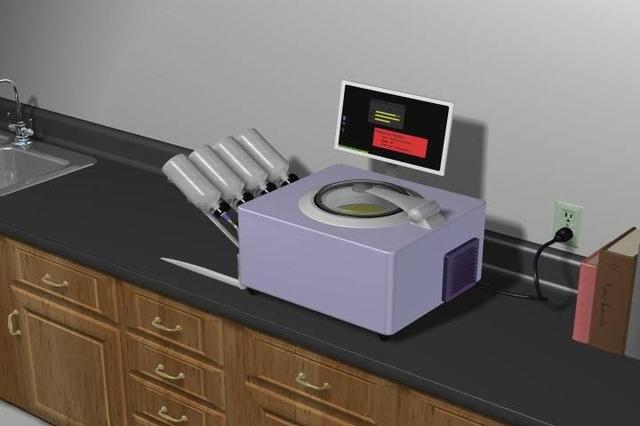
Artistic impression of a desktop molecular assembler. (Credit: CRNano)
“This will be similar to the way personal computers replaced centralised computer-center mainframes over the past decades,” said Hall. “The only thing to worry about is that personal synthesizers will take too much carbon out of the air.”
Hall says that, with nanotech, we’ll be able to attain a completely carbon-free fuel system. For example, we might be able to handle ammonia as fuel, as compared to the not-so-easy to use hydrogen. A nano-fuel cell, once achieved, would produce water vapour and nitrogen. This development would do much to lessen CO2 emissions produced by transportation, which accounts for about 14 per cent of all greenhouse gas emissions.
Nanotech by itself will be enough to do most of this transformation, according to Hall, but ultimately the gold standard for carbon-free energy is nuclear.
“To get a grip on why this is so, you must remember that there is a million times the energy in nuclear fuels than in chemical ones,” he said. “A million times less resource extraction, a million times less processing and transport, a million times less ash. For the same power produced, a reactor uses up less fuel than a windmill uses up lubricating oil — so which is more ‘sustainable’?”
Hall said that our nuclear technology is still very much in its infancy, which he compares to vacuum-tube computers.
“Apply nanotech to the various technological challenges, and you get an extremely clean, extremely cheap energy base,” he said. “Add the productive capabilities of nanotech and you get a revolution in every physical economic sector comparable to the one we’ve seen in information technology. And that means personal synthesizers, flying cars, commercial space travel, and personal immortality. If we want them.”
Changing the Way We Grow Food
Aside from electricity and heat production (at 25 per cent of all global greenhouse gas emissions), agriculture accounts for the next largest piece of the pie at 24 per cent.
In the words of Ramez Naam, “Producing food to eat is the single most destructive environmental activity humans engage in,” an activity that actually dwarfs climate change in terms of the damage its inflicting on our planet. According to Naam, 85 per cent of deforestation is driven by agriculture, and that ocean overfishing has led to the collapse of nearly every fish species we eat, destroying coral reefs and the habitats they provide.

Young wheat (Credit: Akshay Paramatmuni/CC BY-SA 3.0)
The only way to move forward is through the intensification of agriculture. “This means more food on the same or smaller amount of land,” said Naam. “We can do it.” But to get there, we’ll have to genetically improve our crops.
“The right genetics can allow crops to get by with dramatically safer pesticides (or none at all), to use water more efficiently, to fertilize themselves from the nitrogen in the atmosphere, to use far more efficient photosynthesis to turn more of the sunlight that hits them into food, and more,” he said. “That’s a big deal in every country, but it’s even more of a big deal in developing countries, where the crop yields per acre are much lower, because they don’t have tractors, or synthetic fertilizer, or irrigation systems. That’s why I think that GMOs matter hugely, especially for the poorest parts of the world.”

AeroFarms is currently building the world’s largest vertical farm in Newark, NJ. (Credit: AeroFarms)
Another potential solution comes in the form of controlled-environment agriculture (CEA), and the related practice of vertical farming. It’s not perfect, but it’s poised to address many of the problems linked to conventional farming practices. As IGES Canada Ltd. President Michel Alarcon explained to io9 earlier this year, CEA has a number of inherent advantages:
Compared to conventional farms (and depending on the exact configuration and technologies used), they’re around 100 times more efficient in terms of their usage of space, 70-90% less reliant on water, with a lower CO2 footprint. Foods are grown without the use of pesticides, they’re nutrient-rich, and free from chemical contaminants. And because they can be built virtually anywhere, CEAs can serve communities where certain foods aren’t normally grown.
Patrick Hanna, who works with Alarcon, thinks that at some point we’ll need to better connect with our food supply, which will likely mean a transition to more small-scale farming applications, and within communities that work together to promote local produce and livestock initiatives. “Hopefully, it does go this route where people work together to help feed each other to the benefit of the community and the planet,” he said. “I feel this will ensure that we don’t take having access to healthy food for granted.”
Hanna envisions a low-carbon future in which average people live in a high-tech, yet fully functional housing system — one where vegetables are grown in the home in a fully automated smart system. Plants could be grown and harvested in stages, allowing for freshly harvested fruits and vegetables every day. Each house would be like it’s own mini ecosystem.

The Shenzhen Asian Cairn Farmscraper Project (Credit: Vincent Callebaut Architects)
“Homes will be completely self-sustaining and have a means of treating and re-using water as it cycles through the house; from showers, sinks, toilets and plants it will be completely cycled and re-used allowing for minimal waste,” said Hanna. “The body of the house will capture grey water to incorporate into this system.”
On a larger scale, Hanna predicts that each community will have the means to either grow tree based fruits and or pasture animals in order to trade with local communities, similar to what was done in the past. But he admits the majority of the work would be fully automated or controlled by a form of artificial intelligence.
“With grey water capture and smart food systems incorporated with local energy production people can once again be in charge of their own food and energy production,” he said. “It’s like a fully automated, smart system that takes us into the future while also paying homage to the way we used to do it in the past.”
Making Meat
Another major shift, according to Naam, will be the move towards aquaculture, or fish farming. But when it comes to our insatiable desire for meat, the biggest change will have to come to livestock. “Eating animals is super inefficient,” said Naam, but consumption “continues to rise around the world“. That means we’re going to have to grow more feed on the same land if we’re to feed the animals we eat.
“I see no viable way around that anytime soon,” he said. “We have to boost crop yields per acre, in large part because those crops are going to be increasingly turned into meat.”
For the solution, Naam once again points to genetics. “We know that some other mammals produce far less methane than cows and pigs,” he said. “Namely: wallabies, who have symbiotic gut bacteria that consume the methane. Whether it’s through introduction of the right gut bacteria, or direct modification of the genes of cows and pigs, I think we’re going to have to introduce something like this into our livestock — a way to consume the methane rather than releasing it.”
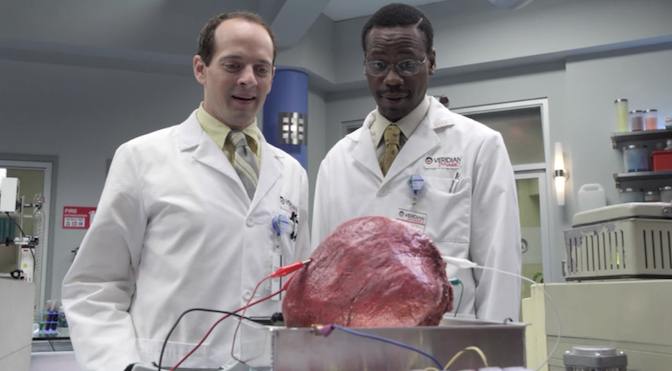
Another possibility is lab-grown meat. Though it might sound a bit off-putting, the prospect of cultured meat is very real, and several serious ventures are currently looking into it. Not only would this eliminate mass herds of livestock, it would be immeasurably more ethical.
The challenge will be lowering cost (it currently costs about $US330,000 ($452,348) to make a single hamburger patty) and finding ways to mass produce it efficiently and sustainably. Oh, and we’ll need to make it tasty.
Hope Over Despair
This is just a small sampling of what we might expect in the coming decades.

Putting it all together: Smart buildings and cities, 2040 (Credit: Sandia National Laboratories)
We can also expect various geoengineering and carbon sequestration efforts to offset the effects of global warming. And maybe our politicians and leaders of industry will finally forge agreements that actually make a difference, such as an effective and enforceable cap-and-trade regimes.
Taken together, these remarkable visions of the future show that we needn’t fall into despair.
